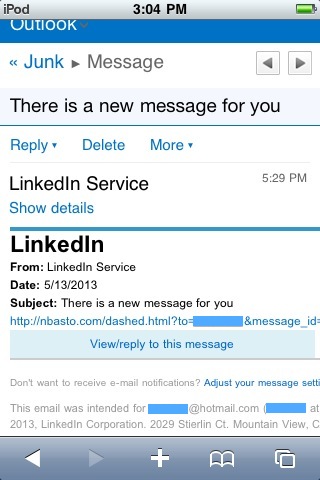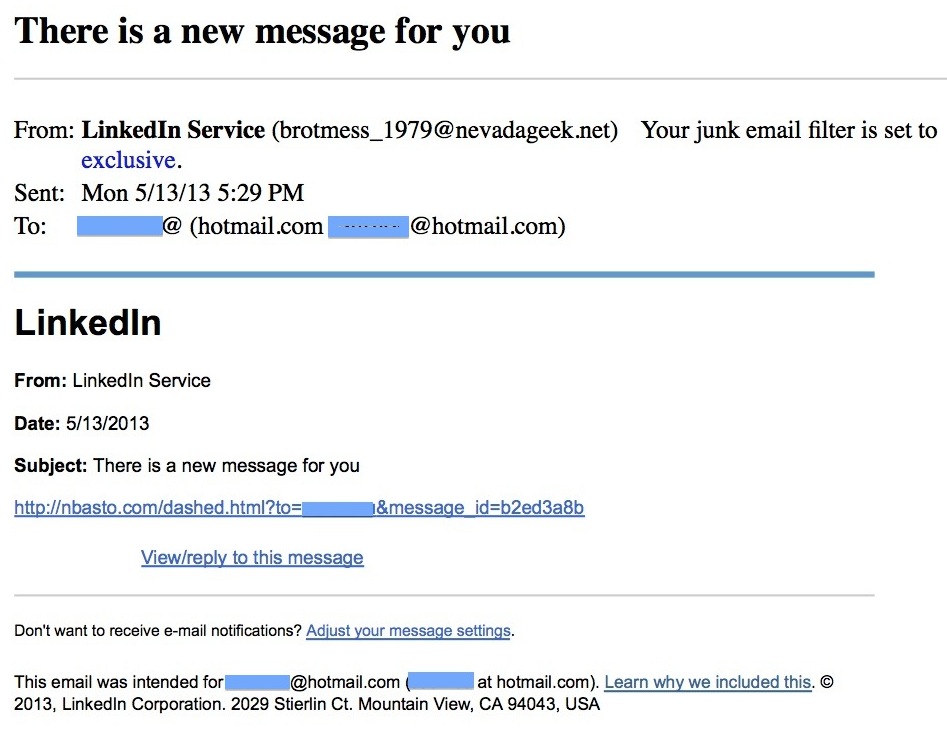
When viewed on a mobile device, this email appears to come from ‘LinkedIn Service’
By Scott Aurnou
‘Phishing’ attacks are designed to steal your personal, financial and/or log in information. This can be done in a few ways, including via email or text message (referred to as ‘smishing’). They often contain links to websites that look legitimate but are really there to steal your account log in information or host malware ready to attack your computer. These emails and messages can also be used to lure you into contact with scam artists posing as potential clients or officials offering to release substantial funds to you if only you would be so kind as to give them detailed personal information and/or a sum up front. Phishing attacks are generally designed to make you take action by either frightening or tempting you. Some of them are actually very well crafted. Some not so much. And some border on the ridiculous. Each month at The Security Advocate, we will present a few examples, along with explanations of what to look out for to avoid falling victim to one of the scams.

When viewed on a desktop or laptop computer, the actual sender is revealed as ‘brotmess_1979@nevadageek.net’ – obviously not affiliated with LinkedIn
At first glance, this looks like a notice regarding a message received via
LinkedIn. Of course, it isn’t and clicking on the link in the message will expose your computer (and possibly network) to attack. While the email above may appear to be relatively accurate at a glance, messages sent through LinkedIn always indicate who they come from. Moreover, as the captions to the images above indicate, this message was
not sent by LinkedIn and was likely sent from a
botnet. That said, if happen to be checking it on your smartphone – or are just going through your email in a hurry – how do you ensure that you won’t fall into this particular trap? It’s actually fairly easy. Whenever you receive an email notification of an incoming message, etc. from any sort of social media site, be sure to log in to the site
directly to read it. Never use the web links found in the notification emails, and you won’t have to find out the hard way that they’re not what they appear to be.
Read more ›















